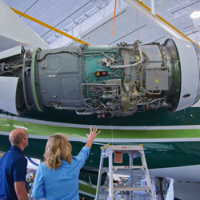
Aircraft Sales & Acquisitions: 2025 Year-End Trends, Market Behavior, and What Buyers Should Expect
As 2025 comes to an end, ACS Rep Rene Cardona reflects on what shaped this year’s preowned business jet market. The fourth quarter is always busy, but this year brought a unique level of intensity, driven by economic uncertainty early on and a surge of confident buyers later. Here’s his perspective on what we experienced in 2025—and what to expect as we head into 2026.




